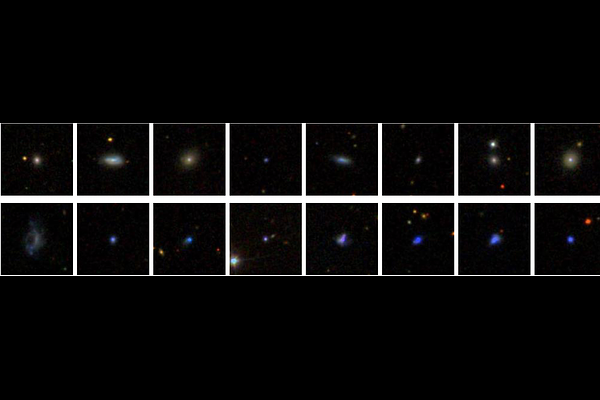Selection of Dwarf Galaxies Hosting AGNs: A Measure of Bias and Contamination using Unsupervised Machine Learning Techniques

Selection of Dwarf Galaxies Hosting AGNs: A Measure of Bias and Contamination using Unsupervised Machine Learning Techniques
Sogol Sanjaripour, Archana Aravindan, Gabriela Canalizo, Shoubaneh Hemmati, Bahram Mobasher, Alison L. Coil, Barry C. Barish
AbstractIdentifying AGNs in dwarf galaxies is critical for understanding black hole formation but remains challenging due to their low luminosities, low metallicities, and star formation-driven emission that can obscure AGN signatures. Machine learning (ML) techniques, particularly unsupervised methods, offer new ways to address these challenges by uncovering patterns in complex data. In this study, we apply Self-Organizing Maps (SOMs) to explore the SED manifold of dwarf galaxies and evaluate AGN selection biases across diagnostics. We train a 51 by 51 SOM on 30,344 dwarf galaxies (redshift less than 0.055 and stellar mass below 10 to the 9.5 solar masses) from the NSA catalog using nine-band photometry from near-UV to mid-infrared. A set of 438 previously identified dwarf AGNs, selected via various methods, was mapped onto the SOM. AGNs identified by different methods occupy distinct and partially overlapping regions in SED space, reflecting selection biases tied to host properties. BPT selected AGNs cluster in higher-mass regions, while X-ray and variability-selected AGNs show broader distributions. WISE-selected AGNs are concentrated in lower-mass regions and form two clumps: one associated with bluer, starburst-like systems and the other with redder, more AGN-like SEDs. This separation may help distinguish true AGN hosts from starburst contaminants in WISE-selected samples. AGNs selected via traditional emission-line, broad-line, and WISE methods tend to avoid SOM regions linked to strong star formation. In contrast, a subset of AGNs in low-mass galaxies occupy regions indicative of high AGN luminosity relative to stellar content, highlighting luminous AGNs in faint hosts. These results demonstrate the utility of manifold learning for improving AGN selection in the low-mass regime.